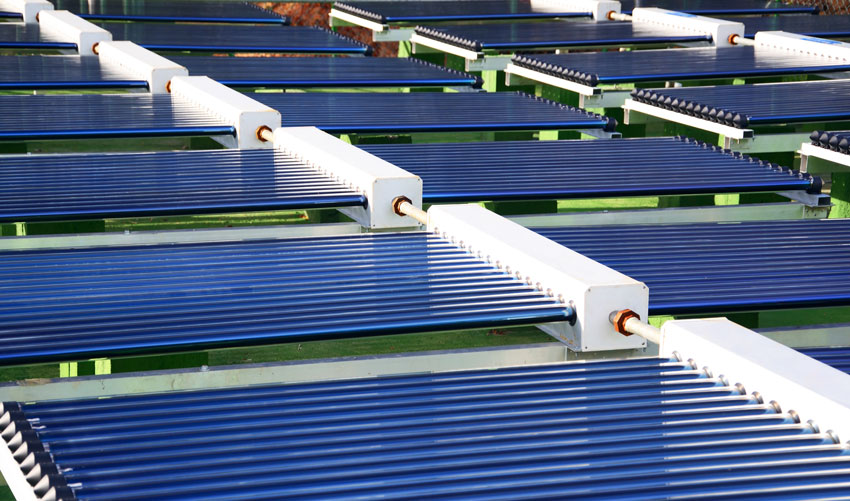Solar Photovoltaic energy or Solar (PV) energy and Solar Thermal energy are two very different processes, even though they have the same basic end-goal; they both produce energy and they both have to do with solar or the sun. Otherwise, though, the two processes are unique. One is used to produce electricity while the other is primarily used to heat water.
So, which energy source is more convenient for you, and how do the two practices stack up against one another? Here is a list of pros and cons, along with a description of each type of energy collection to help you decide.
Solar photovoltaic energy is usually what people are referring to when they talk about solar energy. This process takes the sun’s energy and directly converts it to electricity. From there, with an inverter, you can power your home, office, or anything else you need to power, just as you would from conventional power sources.
Pros of Solar Photovoltaic Energy
Solar photovoltaic energy offers a lot of opportunities for the future of power throughout the world. Even though we are not able to make this a completely mainstream practice, the advancements over the last 20 years have made solar PV energy a possibility for many homes and businesses around the globe:
Sunlight Can Provide Electricity Anywhere the Sun Shines: Whether you are lighting your home or powering a radio out in the woods if there is sunlight, it is possible to get solar PV energy converted to electricity. The sun is a free resource that is highly sustainable. As long as the sun comes up, there is the opportunity to convert its power into electricity.
No Moving Parts: The more moving parts an entity has the more likely it is that it will break. Fortunately for solar PV energy, there are no moving parts. Everything that is done to create solar PV energy is a contained system (that is built to last, considering it needs to be outside to work).
No Greenhouse Gas Emission: One of the big problems that humanity is currently faced with is the emission of greenhouse gases. Greenhouse gasses, mostly carbon dioxide and methane cloud our atmosphere and prevent heat from escaping. This leads to global warming and fossil fuel, especially, is a major contributor to greenhouse gas emissions. Solar PV energy, though, eliminates greenhouse gas emissions, as it uses a clean source of energy to produce the power we need.
Cons of Solar Photovoltaic Energy
While solar photovoltaic energy is useful for so many different applications, there are a few negative aspects to it. Fortunately, the most prevalent cons are due to humanity not yet having the right technology, which means that eventually, this can be remedied.
Unpredictable: When it comes to power, especially electricity, everyone wants predictability. When you flip on a light switch, you expect there to be light. When you plug something in, you expect there to be power flowing to it. While that is not a concern as long as the right amount of power is being collected, the sun itself is unpredictable. When it’s sunny, you’re good to go but when it is cloudy, nighttime, or even just hot outside, your solar energy source is less effective.
High Startup Cost: Individuals are usually the people who are getting solar PV power. While it is sufficient in most cases for households, the initial investment can be expensive. While you can rent or lease solar panels, it is most cost-effective to own them. Regardless, either way you are going to eventually put out a large sum of money to get it going.
Solar Thermal Energy
Solar thermal energy is used to heat a liquid or gas, which can produce hot water and can fuel steam engines, gas turbines, and Stirling engines. Therefore, while a lot of the liquids that are used in heat engines are fossil fuels, companies like it because it is at least using solar thermal energy for part of the process.

Here are the pros and cons of solar thermal energy:
Pros of Solar Thermal Energy
Solar thermal energy may not be as universal as solar PV energy but it certainly does have its uses. Here are the pros of solar thermal energy:
Extremely Efficient: Solar thermal energy is leaps and bounds beyond solar PV energy when it comes to efficiency. Often, solar thermal energy is between 30% and 40% efficient, while the best solar PV energy can currently achieve is 22%. This efficiency advantage allows solar thermal energy to produce hundreds of megawatts of power.
More Space Efficient: In addition to being more efficient in its production, solar thermal energy is also more spatially efficient. That means that you can get more power per square-inch or cell of solar power.
Less Complicated than Solar PV Energy: Solar thermal energy is also less complicated than solar PV energy. This means that it is easier to set up and the installation cost is minimal. Plus, even with greater efficiency, solar thermal energy is also more affordable, both in installation and the cost of supply.
Cons of Solar Thermal Energy
Solar thermal energy certainly helps to cut down on the amount of fossil fuel that is necessary, especially when it comes to industrial machinery. However, there are also a few cons that should be dealt with as solar thermal energy continues to gain traction:
Shorter Lifespan than Solar PV Panels: Even though the lifespan expectancy for solar panels is the same for solar thermal and solar PV panels, 25-30 years, there is a big difference. Solar PV panels are guaranteed for 25-30 years, while solar thermal panels are only expected to work for 25 years. It is possible to get 30 years out of them but that’s it. The only reason life expectancy is the same is because no one really knows how long solar PV panels will continue to work. Experts know the actual life expectancy of solar thermal panels.
Solar Thermal is not as Versatile as Solar PV: Solar PV has a lot of options of where it can be placed and how large the panels need to be. Solar thermal energy is not as versatile. There are set areas where solar thermal panels and technology can be used but the options that solar PV currently has are just not available yet for solar thermal energy.
To close, since solar photovoltaic energy is so much different than solar thermal energy, the decision is not so much an either/or for the same type of power, but rather which type of energy would work best for your situation? The need for hot water is growing, and the heating system for that water can be expensive. Therefore, to help reduce your carbon footprint you might want to start off with a solar thermal system and work your way up to a solar photovoltaic energy system. Ultimately though, whatever you choose to do should align with making your life easier and more cost-effective; even if that means it comes in the form of investment.





